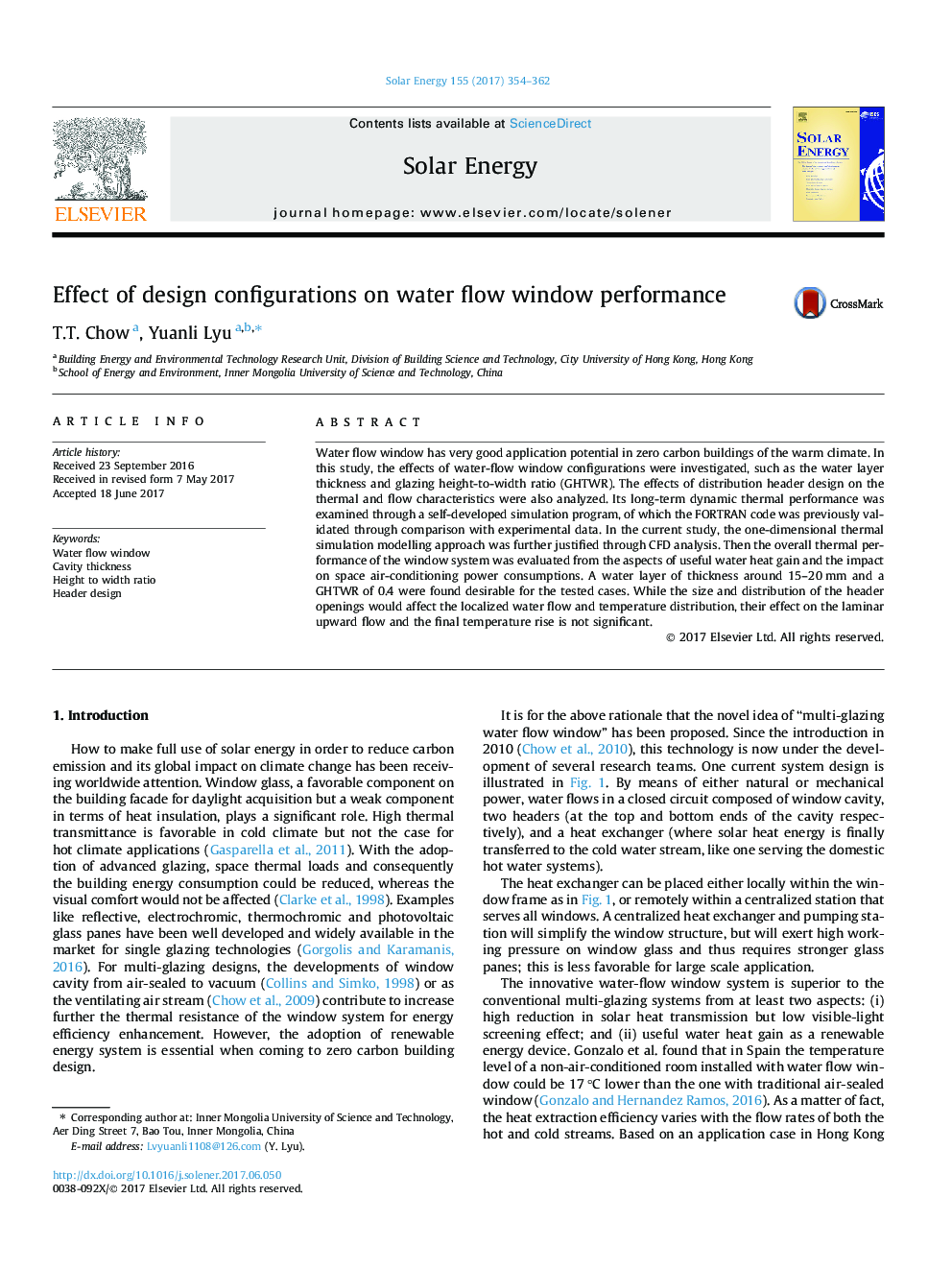| Article ID | Journal | Published Year | Pages | File Type |
|---|---|---|---|---|
| 5450629 | Solar Energy | 2017 | 9 Pages |
Abstract
Water flow window has very good application potential in zero carbon buildings of the warm climate. In this study, the effects of water-flow window configurations were investigated, such as the water layer thickness and glazing height-to-width ratio (GHTWR). The effects of distribution header design on the thermal and flow characteristics were also analyzed. Its long-term dynamic thermal performance was examined through a self-developed simulation program, of which the FORTRAN code was previously validated through comparison with experimental data. In the current study, the one-dimensional thermal simulation modelling approach was further justified through CFD analysis. Then the overall thermal performance of the window system was evaluated from the aspects of useful water heat gain and the impact on space air-conditioning power consumptions. A water layer of thickness around 15-20Â mm and a GHTWR of 0.4 were found desirable for the tested cases. While the size and distribution of the header openings would affect the localized water flow and temperature distribution, their effect on the laminar upward flow and the final temperature rise is not significant.
Related Topics
Physical Sciences and Engineering
Energy
Renewable Energy, Sustainability and the Environment
Authors
T.T. Chow, Yuanli Lyu,
